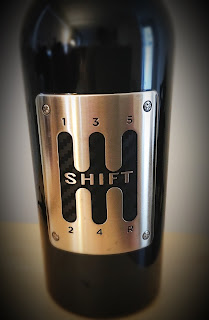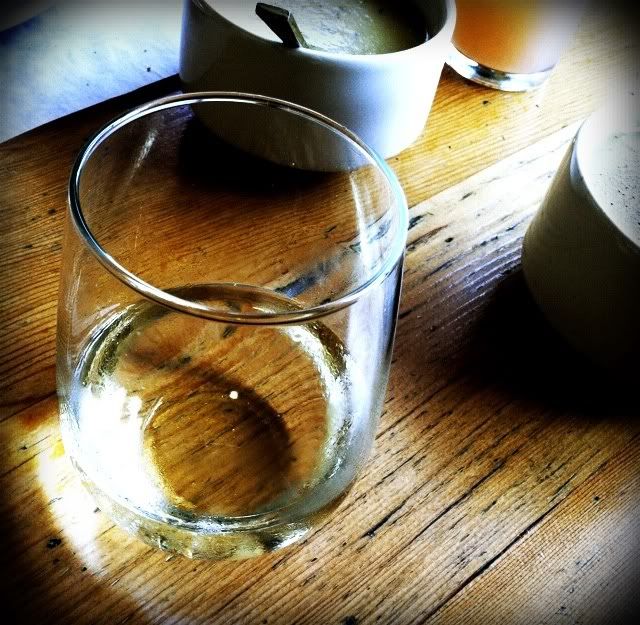There is no horsing around when
Mitch Hawkins, of
Hawk and Horse Vineyards, decides to tell you about his world. He emphasizes the importance of his family, but he also takes some time to hawk his wares.
I had the pleasure of joining Hawkins for a glass of wine at Hollywood’s Roosevelt Hotel when he was in Los Angeles recently. He poured his
Hawk and Horse 2010 Cabernet Sauvignon of the Red Hills AVA, the southernmost in Lake County.
Hawkins is a big believer in biodynamic farming. "Biodynamic agriculture views the farm as a self-contained, self-sustaining ecosystem responsible for creating and maintaining its individual health and vitality without any external or unnatural additions," he writes on the winery’s website. He is proud that his vineyard is Demeter certified. The Demeter Association is known as the first label for organically grown foods.
"We are passionately dedicated to quality from the ground up," he states. "From the selection of our vines and vineyard site, to the most carefully detailed farming practices, we pay special attention to every aspect of the wine growing process. Our soil and climate are perfectly suited to growing Bordeaux varieties, and we specialize in Cabernet Sauvignon."
Hawkins peppers the conversation with numerous farm boy references, proud to talk about the dirt under his fingernails. Figuratively speaking, of course. He cleans up real nice for his forays into the big city.
After a career that has included several disparate occupations, he says of growing his grapes, "I can't imagine doing anything else." He loves talking about the various attributes of his hillside vineyard - the red volcanic soil and the adherence to biodynamics first and foremost. He even had pictures of his land, which he showed like a proud papa.
Oh, and he really is a proud papa. He had pictures of his family to show off, too. They are rodeo people, and he has two girls who participate in barrel racing. A brief interlude occurred while he found a video on his phone of one of his daughters racing a horse through a course set up in the dirt around an array of barrels. The family’s allegiance to the horse world was driven home when he explained that they had bought land on Howell Mountain - a coveted winegrowing site - for use as a rodeo arena.
Eventually, he returned to the discussion on grapes. "Biodynamic farming is a method of working the land in harmony with the dynamic forces of the cosmos and elements of nature," he said. "It was developed by Rudolph Steiner, who lectured that the earthly and cosmic forces work in the farm through the substances of the Earth."
His 18-acre estate is home not only to grapevines, but also a herd of Scottish Highland cattle, who also participate in the biodynamics of the farm. He produced another batch of pictures, showing him burying horns full of dung and worm casings, all in the effort to make the land one with the nature around it. He brough a collection of "Lake County diamonds," the quartz rocks found in the soil on his vineyard site.
Although Hawkins is the winemaker, he recruited some good help - consulting winemaker
Dr. Richard Peterson. Hawkins'
2010 Cabernet Sauvignon is 100% Cab, aged for 21 months in French oak, 90% of which is new. Alcohol in the 1,500 cases produced sits at 14.1% abv and it sells for $65. For his blended wines, he is quick to credit his wife, Tracy, for having the great palate that enables her to call shots on the final blends.
Hawkins is justifiably proud of this wine. "This is one of our most elegant vintages to date," he said. "Long hang time and cooler temperatures gave this vintage great complexity, and it got a 98-point rating!"
This Cab is very dark, deep ruby - almost black. If it were green, it would be English racing green. The luscious nose demands attention immediately. I told Hawkins that it's one of those wines I could just smell and never get around to tasting. He quipped, "I never get tired of hearing that." Minerals, earth and blackberries are in the forefront, graphite comes on after it opens. The palate is elegant, but there is plenty of tannic structure. I want a rib eye with it. Hawkins suggests a New York steak. The lovely cassis flavor hits the minerality just right.
Follow Randy Fuller on Twitter













